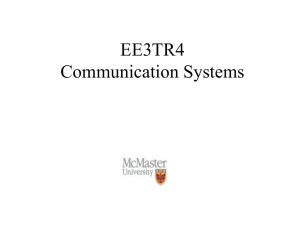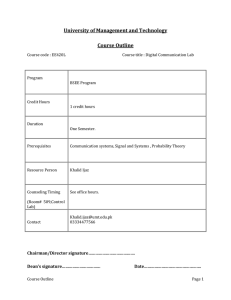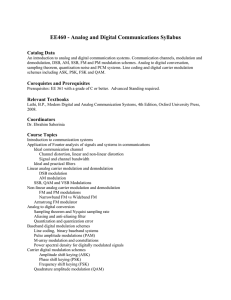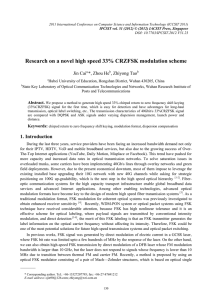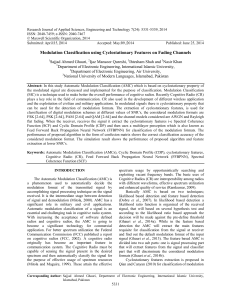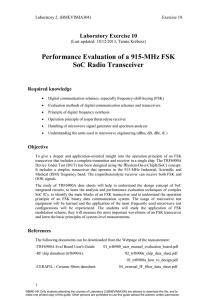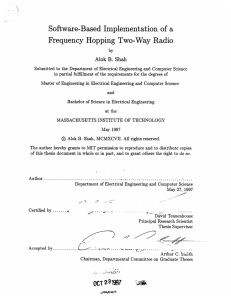EE501:Stochastic Processes
advertisement
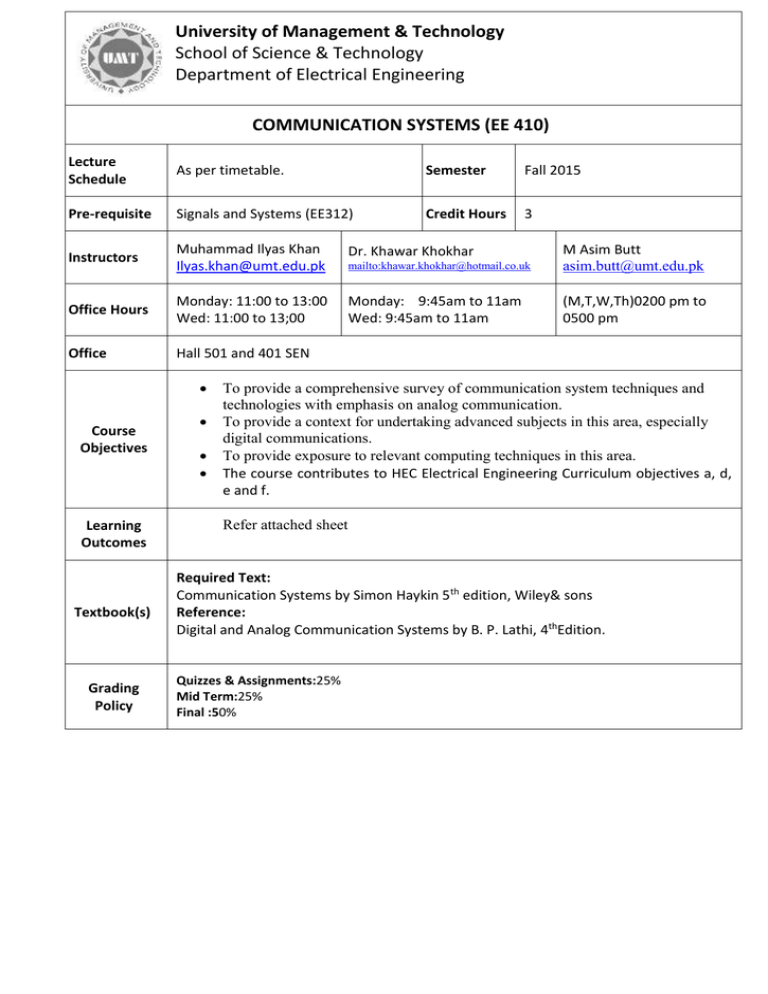
University of Management & Technology School of Science & Technology Department of Electrical Engineering COMMUNICATION SYSTEMS (EE 410) Lecture Schedule As per timetable. Semester Fall 2015 Pre-requisite Signals and Systems (EE312) Credit Hours 3 Instructors Muhammad Ilyas Khan Ilyas.khan@umt.edu.pk Dr. Khawar Khokhar mailto:khawar.khokhar@hotmail.co.uk M Asim Butt asim.butt@umt.edu.pk Office Hours Monday: 11:00 to 13:00 Wed: 11:00 to 13;00 Monday: 9:45am to 11am Wed: 9:45am to 11am (M,T,W,Th)0200 pm to 0500 pm Office Hall 501 and 401 SEN Course Objectives Learning Outcomes Textbook(s) Grading Policy To provide a comprehensive survey of communication system techniques and technologies with emphasis on analog communication. To provide a context for undertaking advanced subjects in this area, especially digital communications. To provide exposure to relevant computing techniques in this area. The course contributes to HEC Electrical Engineering Curriculum objectives a, d, e and f. Refer attached sheet Required Text: Communication Systems by Simon Haykin 5th edition, Wiley& sons Reference: Digital and Analog Communication Systems by B. P. Lathi, 4thEdition. Quizzes & Assignments:25% Mid Term:25% Final :50% Course Plan Lectures 1-2 3-4 5-7 8-11 12-15 Topics Introduction Communication System Block Diagram( Transmitter and Receiver) Signal to Noise Ratio (SNR), Channel Bandwidth and Data Rate Randomness, Redundancy and Coding Performance Metrics for Communication Systems Overview of Signals and Systems Fourier Transform and its properties Inverse Fourier Transform Fourier Transform of periodic Signals Transmission of Signals Signal Transmission through a Linear System Filters Phase and Group Delay Amplitude Modulation Standard AM Double Sideband Suppressed Carrier (DSB-SC) Quadrature-carrier Multiplexing SSB and VSB Frequency Translation Frequency Division Multiplexing Phase and Frequency Modulation Frequency Modulation Phase-Locked Loop (PLL) Non-Linear effects in FM Systems The Super-heterodyne Receivers Readings Lecture Notes 2.1-2.6 2.7, 2.11 3.1-3.8 4.1-3, 4.5-6 Mid-Term 16-19 20-21 22-23 24-27 28-30 Random Variables and Random (Stochastic) Processes Random Variables and Statistical Averages Random Processes and WSS Transmission of Random Processes through a Linear Filter Power Spectral Density Gaussian Processes and Noise Digital Representation of Analog Signals The Sampling Process, Pulse Amplitude Modulation. The Quantization Process Pulse-Code Modulation Baseband Transmission of Digital Signals Baseband Pulses and Matched Filter Detection Probability of Error Due to Noise Inter-symbol Interference (ISI) Nyquist Criterion for Distortion-less Transmission Band-pass Transmission Band-pass Transmission Model Transmission of Binary PSK and FSK Coherent and Non-coherent Detection of PSK/FSK 5.3-10 7.3, 7.4 7.8-9 8.1-6 Lecture Notes 9.1-5 Lecture Notes Expected Course Outcomes: After completing the course the student should have following concepts and analytical skills. 1. Describe role of different communication techniques with a proper global (overall) context. 2. Evaluate and interpret Fourier transform (and its inverse) for a rectangular pulse, exponential signal, delta function, periodic impulse train, etc. 3. Determine 3-dB bandwidth of a signal or system from the expression of Fourier transform and energy-spectral-density (ESD). 4. Describe different types of channels (ideal, band-limited, multipath) and their response to basic signals. 5. Define phase and group delay from the frequency response of a system/channel and appreciate its implications on message transmission through a channel using examples. 6. Express amplitude modulation (AM) and DSB-SC modulation mathematically and graphically in time and frequency domains. 7. Estimate modulation index and efficiency of tone modulated AM signal. 8. Describe the importance of phase coherence between transmitter and receiver. 9. Explain working of a switching modulator, ring modulator, envelope detector and Costas receiver. 10. Explain a QAM multiplexer mathematically and with the help of a diagram. 11. Explain single side band (SSB) and vestigial side band (VSB) modulation and their application. 12. Describe frequency division multiplexing (FDM) and its application. 13. Describe application of a mixer to shift pass-band signals from one frequency to another. 14. Describe frequency modulation (FM) mathematically with the help of definition of instantaneous frequency. Also describe the relation between frequency and phase modulation. 15. Evaluate spectral component of FM using Bessel function table and determine the bandwidth of broadband FM. 16. Explain operation of phase-locked-loop (PLL). 17. Describe effect of non-linearity on FM. 18. Explain functionality of every block of super-heterodyne receiver. 19. Understand and describe the difference between a random variable and random (stochastic) processes. 20. Evaluate mean, correlation and covariance functions. 21. Explain autocorrelation and PSD of thermal noise. 22. Describe sampling and aliasing in time and frequency domains. 23. Describe uniform quantization, importance of quantization levels and its effect on data rate. 24. Describe complete technique of pulse-code modulation (PCM). 25. Describe Time-Division-Multilpexing. 26. Derive and expression for matched filter detection of a pulse transmitted through an AWGN channel. 27. Evaluate probability of error for an AWGN channel. 28. Explain Nyquist criterion for avoiding inter-symbol interference. 29. Explain Phase Shift keying (PSK) and Frequency Shift Keying (FSK) in time and frequency domains. 30. Describe transmitter and receiver of PSK/FSK/ CPFSK with the help of block diagrams. 31. Describe Minimal Shift Keying (MSK), Gaussian pulse shaping and GMSK modulation and its implementation in GSM.

